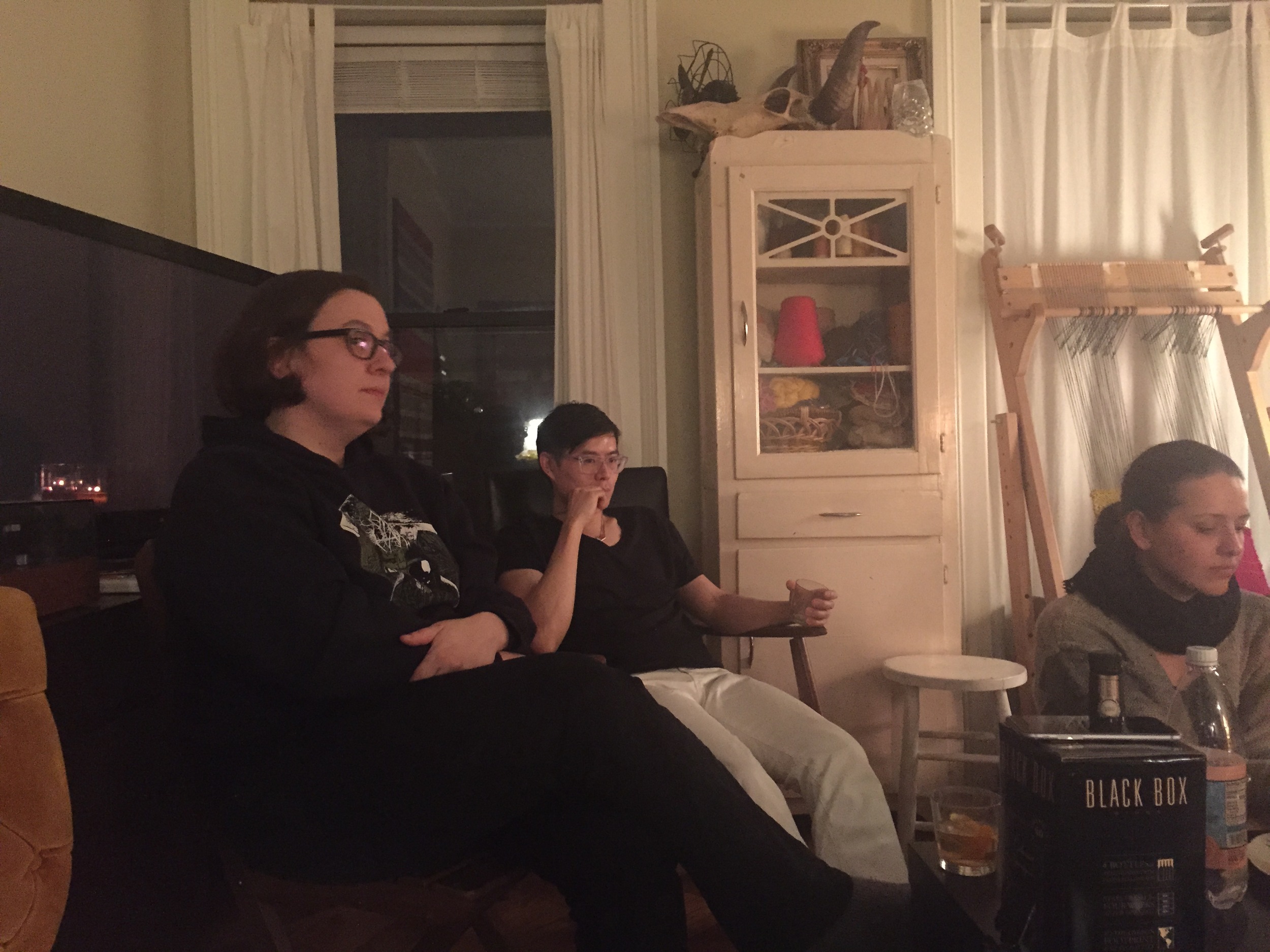Please allow 30 seconds for the audio to load
- How do two separate modes of working in your practice influence each other?
- How do you make meaning in your work? Is it important for your audience to understand your work?
- How do you read your own work?
- How is the experience of time important to the labor process in your practice?
- Do you act as the architect who builds the house or as the housewife who labors through the house in your art practice?
Crystal Gregory begins the final conversation of the meaning series by describing how each artist in the group appears to work in two modes. She describes how Jonathan Allen works between painting and performance, Lee Hunter works between sculpture and photography, Robin Kang between textile and print, Sarah Williams between sculpture and installation, and Seldon Yuan between poetry and visual art. Chrystal asks how these two modes of working influence each other and are related. Lee Hunter begins by saying that these modes are not very different at all. Jonathan Allen explains how the same idea can be conveyed in different materials. Working through several modes helps to keep an engaging and active practice. Jonathan also talks about two different approaches to creating: one with a clear intention and creating based on a specific goal versus creating through experimentation and process. We describe the latter process as being much riskier and producing more failure but somehow more engaging. Seldon Yuan, on the other hand, explains that his practice is rooted in having a specific idea in mind and he rejects the idea of stopping when the work looks good enough. He discusses the concept of generosity and the necessity of artists being generous with their audiences by helping them access the work. He uses Gabriel Orozco’s Yogurt Caps as an example, citing that Orozco was not generous to his audience in the obscure gesture and how problematic it can be to make work that you yourself cannot connect to. Crystal questions the importance of time through labor to a practice. She describes that her labor-intensive practice allows for more time to think through the materiality and the ideas in the work. We discuss the assistant-based studio practice which removes the artist from the physical labor of the work and de-authenticates the work on some level. Seldon discusses the intimacy that’s created through making the work yourself. However, de-skilling and skill-resistant practices have become applauded over craft-based practices. We go on to talk about the artist acting as an architect in drafting the blue print of the work but executing it less and less. Crystal references Jan Verwoert’s video “Why are conceptual artists painting again? Because they think it’s a good idea” from our third meaning discussion when she asks the group whether they believe in an architect-based studio practice where the building of the house is the project versus the housewife-based practice where the laboring over the maintence of the house is the project.






